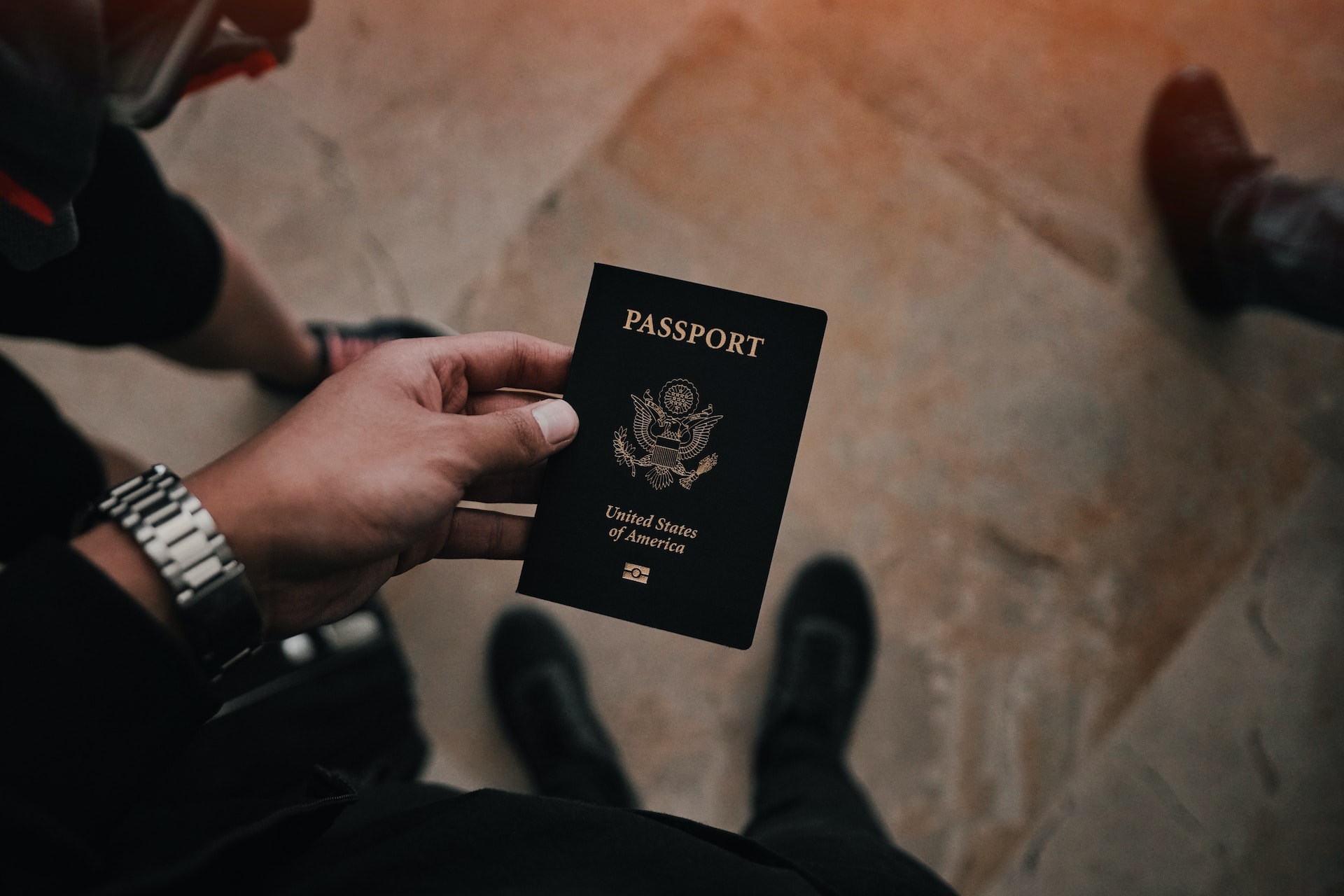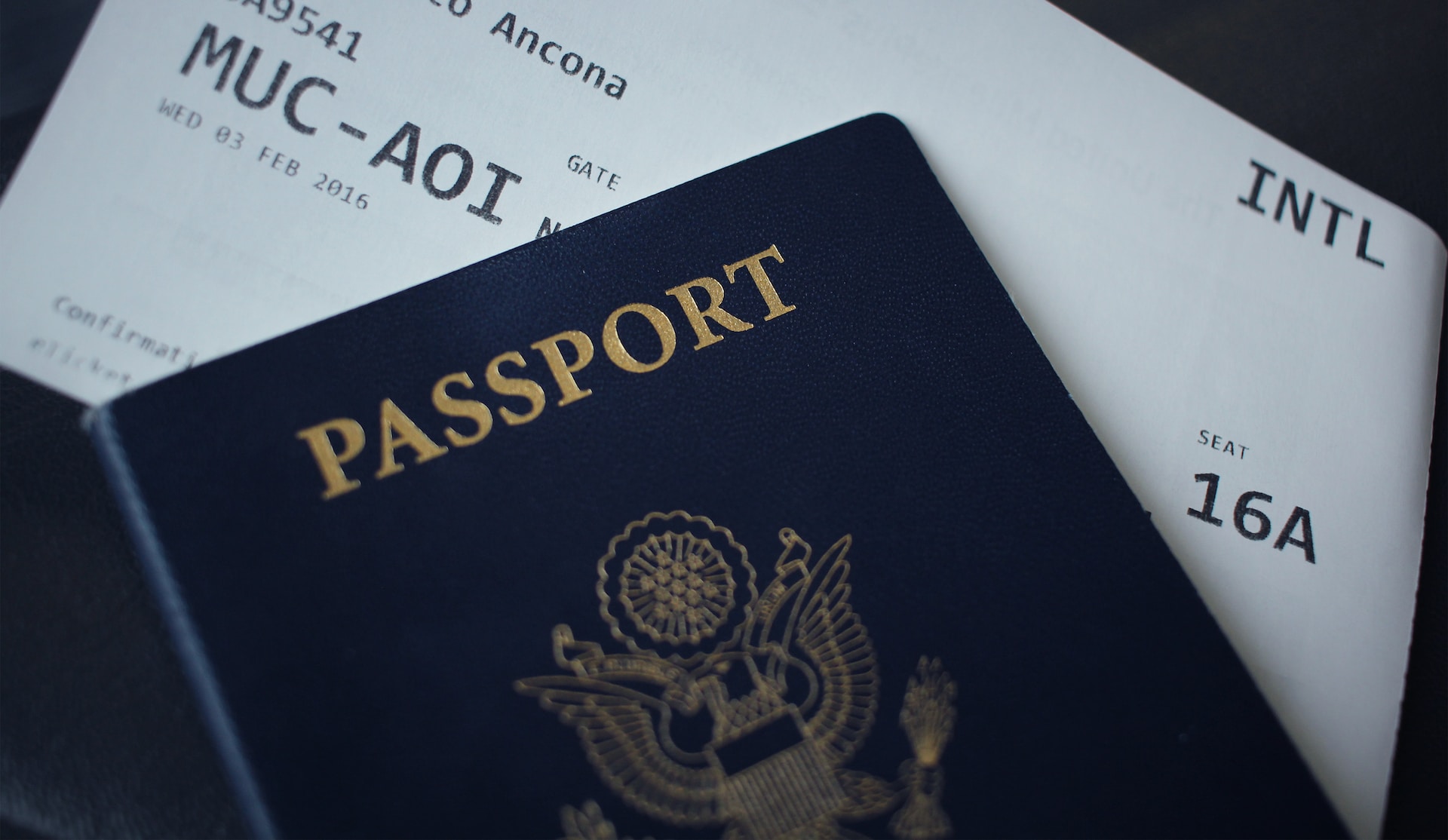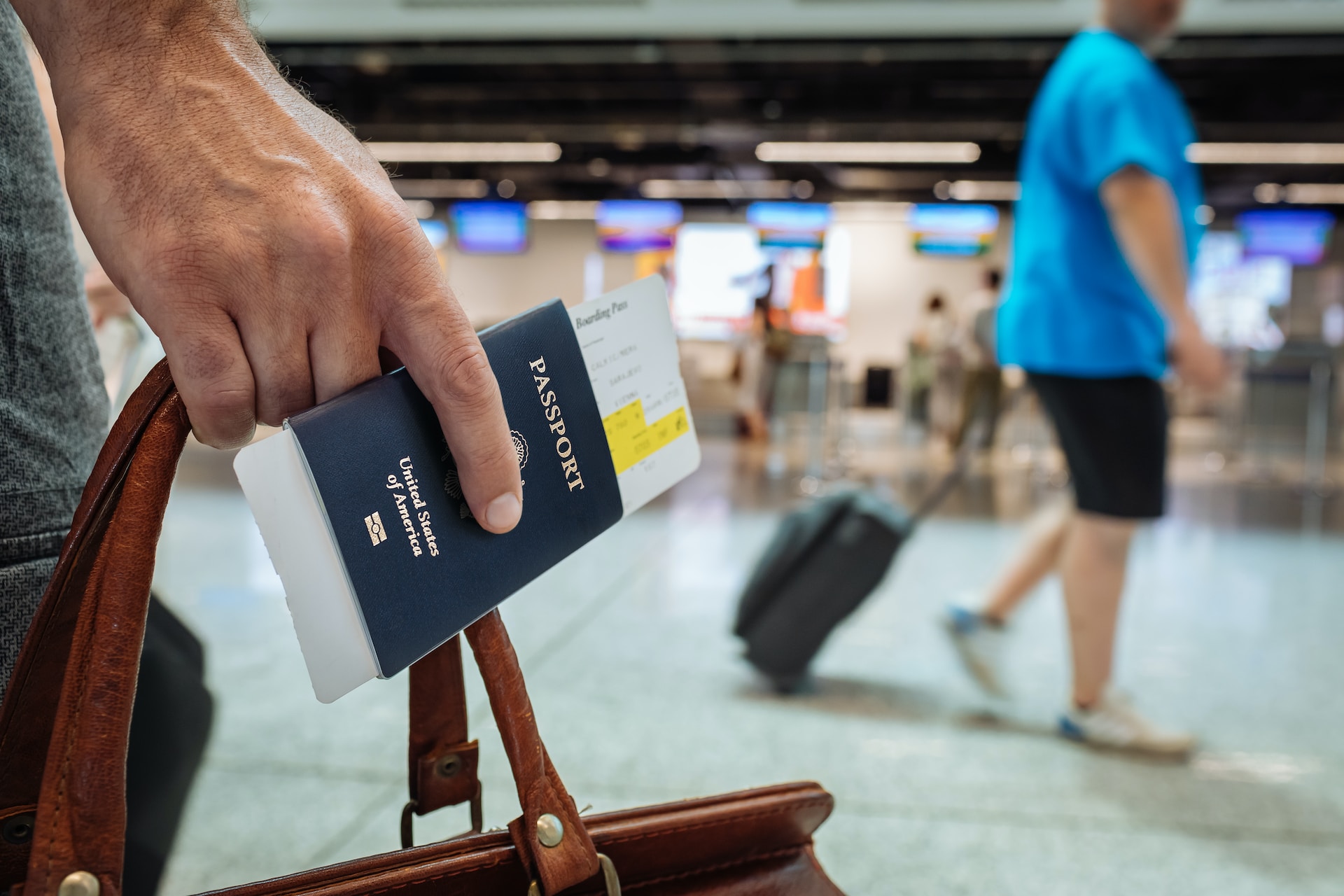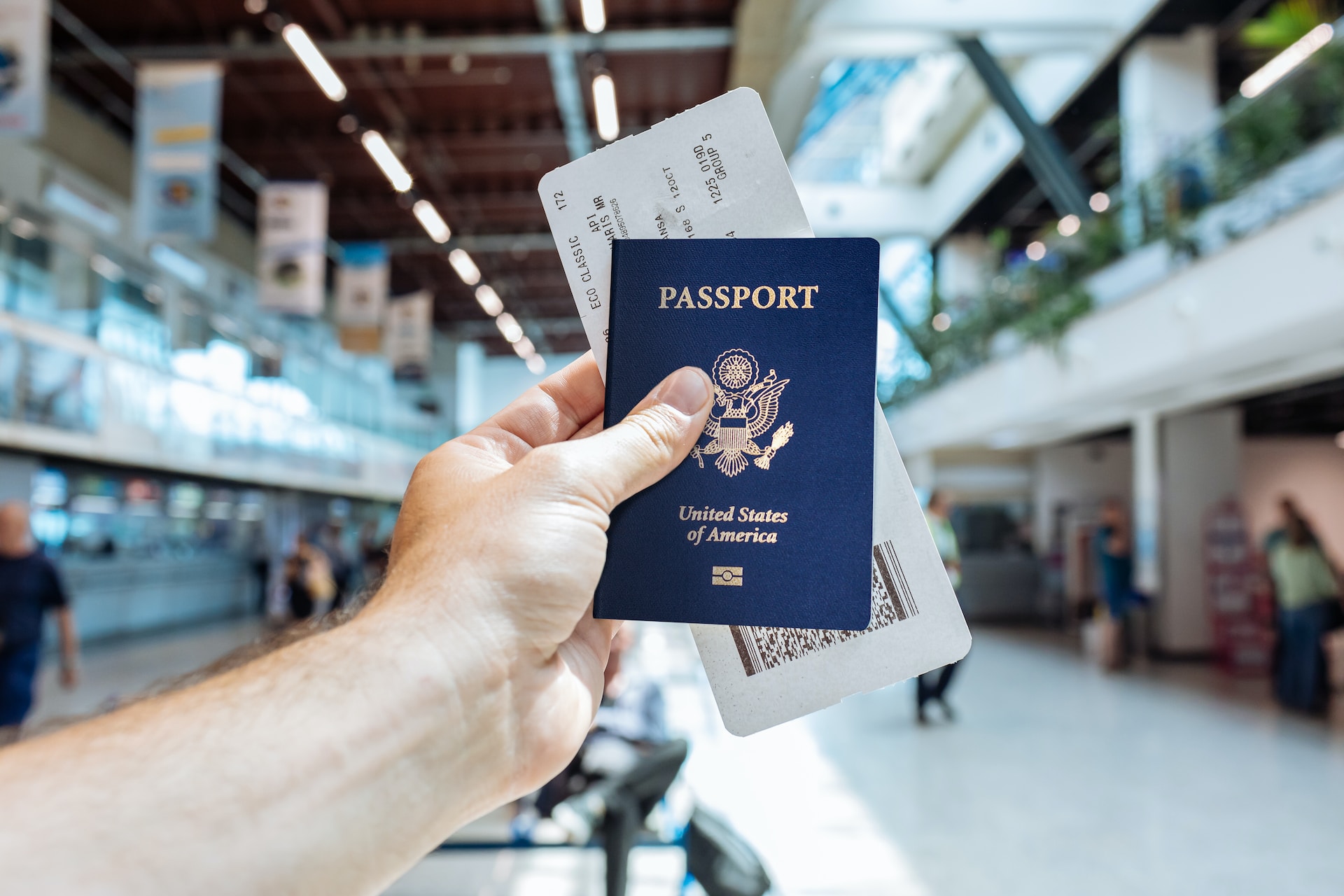Are you dreaming of living and working in the United States permanently? If so, you may be interested in applying for a Green Card. A Green Card, officially known as a Permanent Resident Card, is a document that grants you the right to live and work in the U.S. indefinitely, as long as you abide by the laws and regulations of the country. In this article, we will explain everything you need to know about Green Cards, including what they are, how to get one, how to renew or replace one, how to work in the U.S. with one, and how to seek refuge or asylum in the U.S. with one.
What is a Green Card?
A Green Card is a proof of your status as a lawful permanent resident of the United States. It also serves as a valid identification document and evidence of your eligibility to work in the U.S. Having a Green Card does not make you a U.S. citizen, but it does give you many benefits and responsibilities that nonimmigrants do not have.
Benefits of having a Green Card
Some of the benefits of having a Green Card are:
- You can live and work in the U.S. permanently without any restrictions or limitations.
- You can travel in and out of the U.S. freely, as long as you maintain your permanent residence in the country.
- You can sponsor your spouse and unmarried children under 21 years old for their own Green Cards.
- You can apply for U.S. citizenship after meeting certain requirements, such as living in the U.S. for at least five years and passing a naturalization test.
- You can access certain public benefits and services, such as Social Security, Medicare, and public education.
- You can own property, start a business, invest, and pay taxes in the U.S.
Types of Green Cards
There are different types of Green Cards that you can apply for depending on your situation and eligibility category. The most common types are:
Family-based Green Cards
These are for people who have close relatives who are U.S. citizens or permanent residents. The relatives can sponsor them for their Green Cards by filing an immigrant petition on their behalf. There are two main categories of family-based Green Cards: immediate relatives and preference relatives.
Immediate relatives are spouses, parents, and unmarried children under 21 years old of U.S. citizens. They do not have to wait for a visa number to become available because there is no limit on how many visas can be issued to them each year.
Preference relatives are other family members of U.S. citizens or permanent residents who do not qualify as immediate relatives. They include unmarried children over 21 years old, married children, siblings, and spouses and children of permanent residents. They have to wait for a visa number to become available because there is a limit on how many visas can be issued to them each year. The waiting time depends on the preference category and the country of origin of the applicant.
Employment-based Green Cards
These are for people who have valuable skills, education, or experience that can benefit the U.S. economy. They can be sponsored by a U.S. employer who files an immigrant petition on their behalf, or they can self-petition if they meet certain criteria. There are five main categories of employment-based Green Cards:
- EB-1: for people with extraordinary ability, outstanding professors and researchers, or multinational executives and managers.
- EB-2: for people with advanced degrees, exceptional ability, or national interest waivers.
- EB-3: for people with bachelor’s degrees, skilled workers, or unskilled workers.
- EB-4: for people with special immigrant status, such as religious workers, translators, broadcasters, or military personnel.
- EB-5: for people who invest at least $900,000 in a new commercial enterprise that creates at least 10 full-time jobs in the U.S.
Diversity Visa Lottery
This is a program that randomly selects applicants from countries with low rates of immigration to the U.S. Each year, 55,000 visas are allocated to eligible applicants who meet certain education or work requirements. The applicants have to submit an online application during a specified registration period and wait for the results to be announced. If selected, they have to complete the visa application process and undergo a medical examination and an interview.
Other special categories
These are for people who belong to certain groups that are eligible for Green Cards based on humanitarian or other reasons. Some examples are:
- Asylees and refugees: people who have been granted asylum or refugee status in the U.S. because they have suffered persecution or fear persecution in their home country due to their race, religion, nationality, political opinion, or membership in a particular social group.
- U visa holders: victims of certain crimes who have suffered substantial physical or mental abuse and have cooperated with law enforcement authorities in the investigation or prosecution of the crime.
- T visa holders: victims of human trafficking who have complied with reasonable requests from law enforcement authorities in the investigation or prosecution of the trafficking crime.
- VAWA self-petitioners: abused spouses, children, or parents of U.S. citizens or permanent residents who have filed an immigrant petition on their own behalf under the Violence Against Women Act (VAWA).
- Special Immigrant Juveniles: children who have been abused, abandoned, or neglected by one or both parents and have been placed under the custody of a state court or a juvenile court in the U.S.
How to apply for a Green Card
The process of applying for a Green Card varies depending on your eligibility category and whether you are applying from inside or outside the U.S. However, there are some general steps that you need to follow:
Eligibility requirements
Before you apply for a Green Card, you need to make sure that you meet the eligibility requirements for your specific category. You can check the eligibility criteria on the USCIS website or consult with an immigration attorney if you have any questions or doubts.
Application process
The application process typically involves these steps:
Filing an immigrant petition
An immigrant petition is a form that establishes your relationship with your sponsor (if applicable) and your eligibility for a Green Card. The sponsor can be a family member, an employer, or yourself (if you qualify for self-petitioning). The sponsor has to file the petition with USCIS and pay the required fees. The most common immigrant petitions are:
- Form I-130: Petition for Alien Relative
- Form I-140: Immigrant Petition for Alien Worker
- Form I-360: Petition for Amerasian, Widow(er), or Special Immigrant
- Form I-526: Immigrant Petition by Alien Investor
- Form I-589: Application for Asylum and for Withholding of Removal
Checking visa availability
After USCIS approves your immigrant petition, you have to check if there is a visa number available for your category and country of origin. A visa number is a unique identifier that allows you to apply for a Green Card. There is a limit on how many visas can be issued each year for each category and country, so you may have to wait until your priority date becomes current. Your priority date is the date when USCIS received your immigrant petition.
You can check the visa availability on the Department of State website by looking at the Visa Bulletin. The Visa Bulletin shows the cut-off dates for each category and country. If your priority date is earlier than or equal to the cut-off date, it means that there is a visa number available for you.
Filing a Green Card application
Once there is a visa number available for you, you can file your Green Card application with USCIS (if you are inside the U.S.) or with the National Visa Center (NVC) and the U.S. consulate or embassy in your home country (if you are outside the U.S.). The Green Card application is a form that collects your personal information, biographic information, immigration history, and other relevant details. The form you need to file depends on where you are applying from:
- Form I-485: Application to Register Permanent Residence or Adjust Status (if you are inside the U.S.)
- Form DS-260: Immigrant Visa and Alien Registration Application (if you are outside the U.S.)
You also need to submit supporting documents, such as:
- Passport
- Birth certificate
- Marriage certificate (if applicable)
- Divorce decree (if applicable)
- Police clearance certificate
- Medical examination report
- Affidavit of support (if applicable)
- Evidence of your eligibility category
- Photographs
You also need to pay the required fees for your Green Card application. The fees vary depending on your category and where you are applying from. You can check the fee schedule on the USCIS website or the Department of State website.
Attending biometrics appointments and interview
After you file your Green Card application, you may have to attend a biometrics appointment and an interview. A biometrics appointment is a short appointment where you provide your fingerprints, photograph, and signature for identity verification and background checks. An interview is a longer appointment where you meet with a USCIS officer or a consular officer who will ask you questions about your application and verify your documents.
The time, date, and place of your biometrics appointment and interview will be specified in a notice that you will receive from USCIS or NVC. Bring your original documents, a copy of your application, and any additional paperwork that USCIS or NVC may want. If necessary, you are allowed to bring an interpreter.
Receiving your Green Card
If your Green Card application is approved, you will receive your Green Card in the mail (if you are inside the U.S.) or at the U.S. consulate or embassy in your home country (if you are outside the U.S.). Your Green Card will be valid for 10 years, unless it is a conditional Green Card that is valid for 2 years. A conditional Green Card is issued to spouses of U.S. citizens or permanent residents who have been married for less than 2 years, or to investors who have not yet met the job creation requirements. You have to remove the conditions on your Green Card before it expires by filing a petition with USCIS.
How to renew or replace your Green Card
Your Green Card is an important document that you need to keep valid and updated. You may need to renew or replace your Green Card for various reasons, such as:
When to renew your Green Card
You need to renew your Green Card if:
- It is expired or will expire within 6 months.
- It was issued before you turned 14 years old and you are now 14 years old or older.
- It was issued with incorrect information or has been damaged or mutilated.
- You have changed your name or other biographic information since it was issued.
How to renew your Green Card online or by mail
You can renew your Green Card online or by mail by following these steps:
- File Form I-90: Application to Replace Permanent Resident Card with USCIS and pay the required fee.
- Receive a notice from USCIS with the date, time, and location of your biometrics appointment.
- Attend your biometrics appointment and provide your fingerprints, photograph, and signature.
- Receive your new Green Card in the mail.
When to replace your Green Card
You need to replace your Green Card if:
- It is lost, stolen, or destroyed.
- It was never received in the mail.
- It was issued with incorrect information or has been damaged or mutilated.
- You have changed your name or other biographic information since it was issued.
How to replace your Green Card online or by mail
You can replace your Green Card online or by mail by following these steps:
- File Form I-90: Application to Replace Permanent Resident Card with USCIS and pay the required fee.
- Receive a notice from USCIS with the date, time, and location of your biometrics appointment.
- Attend your biometrics appointment and provide your fingerprints, photograph, and signature.
- Receive your new Green Card in the mail.
How to work in the U.S. with a Green Card
One of the main benefits of having a Green Card is that you can work in the U.S. without any restrictions or limitations. However, there are some rights and responsibilities that you need to be aware of as a permanent resident worker.
Rights and responsibilities of Green Card holders
As a permanent resident worker, you have the right to:
- Work for any employer in any industry, occupation, or location in the U.S., except for some jobs that require U.S. citizenship, such as federal government jobs.
- Change jobs or employers without affecting your permanent resident status, as long as you do not violate the terms and conditions of your Green Card.
- Join a union, collective bargaining unit, or other labor organization that protects your rights and interests as a worker.
- Receive fair wages, benefits, and working conditions according to federal, state, and local laws and regulations.
- File a complaint or seek legal assistance if you face discrimination, harassment, or exploitation in the workplace based on your race, color, religion, sex, national origin, age, disability, or other protected characteristics.
As a permanent resident worker, you have the responsibility to:
- Pay federal, state, and local income taxes and social security taxes on your earnings.
- Report any changes in your address, name, or other biographic information to USCIS within 10 days of the change.
- Register with the Selective Service System if you are a male between 18 and 25 years old.
- Obey the laws and regulations of the U.S. and respect the rights and freedoms of others.
- Support the U.S. Constitution and the principles of democracy.
How to find a job in the U.S. as a permanent resident
Finding a job in the U.S. can be challenging, especially if you are new to the country and do not have much work experience or education. However, there are some resources and tips that can help you in your job search:
-
Use online job boards, such as Indeed, Monster, or LinkedIn, to search for jobs that match your skills, qualifications, and interests:
You can also upload your resume and create a profile that showcases your achievements and goals.
-
Network with people who work in your field or industry, such as former colleagues, classmates, professors, mentors, or friends:
You can also join professional associations, clubs, or groups that organize events, workshops, or seminars related to your career. Networking can help you learn about job opportunities, get referrals, or receive advice and guidance.
-
Attend job fairs, career expos, or hiring events that are held in your area or online:
You can meet with potential employers, submit your resume, or have an interview on the spot. You can also learn about the requirements and expectations of different employers and industries.
-
Seek assistance from local organizations that provide employment services to immigrants and refugees:
These organizations can help you with resume writing, interview preparation, job placement, language training, credential evaluation, or career counseling. You can find these organizations on the USCIS website or by contacting your state refugee coordinator.
-
Be flexible and adaptable to the U.S. labor market and culture:
You may have to accept a lower-level position than what you had in your home country or a different field than what you studied or worked in. You may also have to adjust to different work styles, expectations, and norms than what you are used to. However, these challenges can help you gain valuable experience, skills, and connections that can lead to better opportunities in the future.
How to start a business in the U.S. as a permanent resident
If you have an entrepreneurial spirit and a great idea, you may want to start your own business in the U.S. as a permanent resident. Starting a business can be rewarding, but also risky and complex. You need to consider many factors, such as:
Type of Business:
The type of business you want to start, such as a sole proprietorship, a partnership, a corporation, or a limited liability company (LLC). Each type has different legal, tax, and financial implications that affect your liability, ownership, and control of the business.
Location:
The location of your business, such as a home office, a commercial space, or an online platform. Each location has different zoning, licensing, and permitting requirements that affect your operations, costs, and compliance with the law.
Market:
The market for your product or service, such as the demand, competition, pricing, and distribution. You need to conduct market research and analysis to identify your target customers, their needs and preferences, and how you can differentiate yourself from other businesses in the same industry or niche.
Funding:
The funding for your business, such as your personal savings, loans, grants, or investors. You need to prepare a business plan and a budget that outline your goals, strategies, and projections for your business. You also need to have a good credit history and score to qualify for financing options.
Regulations:
The regulations for your business, such as federal, state, and local laws and rules affect your taxes, labor, health, safety, environment, and trade. You need to register your business name and entity with the appropriate authorities, obtain an Employer Identification Number (EIN) from the IRS, open a business bank account, and file the required tax returns and forms.
You can find more information and resources on how to start a business in the U.S. on the Small Business Administration website or by contacting your local Small Business Development Center.
How to seek refuge or asylum in the U.S. with a Green Card
If you are afraid to return to your home country because you have suffered persecution or fear persecution due to your race, religion, nationality, political opinion, or membership in a particular social group, you may be eligible for refuge or asylum in the U.S. Refugees and asylees are both types of humanitarian protection that grant you the right to live and work in the U.S., but they have different application processes.
Difference between refugees and asylees
The main difference between refugees and asylees is where they apply for protection:
- Refugees apply for protection outside the U.S., usually through the United Nations High Commissioner for Refugees (UNHCR) or another international organization that refers them to the U.S. Refugee Admissions Program (USRAP). They undergo a rigorous screening process that includes interviews, security checks, medical examinations, and cultural orientation before they are admitted to the U.S.
- Asylees apply for protection inside the U.S., either at a port of entry or after they have entered the country. They file an application with USCIS or an immigration judge within one year of their arrival or of their last entry. They undergo background checks and fingerprinting before they are granted asylum status.
Another difference between refugees and asylees is the number of people who can be admitted each year:
- Refugees are subject to an annual cap that is determined by the President in consultation with Congress. The cap varies depending on the global humanitarian situation and the U.S. national interest. For fiscal year 2022 (October 1st 2021 – September 30th 2022), the cap is set at 125000 refugees.
- Asylees are not subject to an annual cap. However, there is a limit on how many asylees can adjust their status to permanent residents each year. The limit is set at 10000 asylees per fiscal year.
Eligibility criteria for refugees and asylees
The eligibility criteria for refugees and asylees are similar but not identical. To qualify for either status, you must meet the definition of a refugee under U.S. law:
- A refugee is someone who is unable or unwilling to return to their home country because of persecution or a well-founded fear of persecution on account of race, religion, nationality, membership in a particular social group, or political opinion.
In addition, to qualify for refugee status, you must:
- Be outside your home country and outside the U.S. at the time of your application.
- Not have firmly resettled in another country.
- Not having any bars to admission, such as having committed a serious crime, posing a security risk, or being inadmissible for health or other reasons.
To qualify for asylum status, you must:
- Be physically present in the U.S. or at a port of entry at the time of your application.
- Not have been previously denied asylum by an immigration judge or the Board of Immigration Appeals (BIA).
- Not having any bars to asylum, such as having committed a serious crime, posing a security risk, or being subject to a safe third country agreement.
The application process for refugees and asylees
The application process for refugees and asylees also differs depending on where and how they apply for protection:
- Refugees apply for protection through the USRAP, which involves several steps and agencies. The steps include:
- Registration with UNHCR or another international organization that identifies and refers eligible refugees to the USRAP.
- Pre-screening by a Resettlement Support Center (RSC) that collects biographic and biometric information and prepares case files for review by USCIS.
- Interview by a USCIS officer who determines whether the applicant meets the definition of a refugee and is admissible to the U.S.
- Security checks by multiple U.S. agencies verify the identity and background of the applicant and ensure that they do not pose a threat to national security or public safety.
- Medical examination by a panel physician who assesses the health condition and vaccination status of the applicant and identifies any medical issues that may require treatment or follow-up in the U.S.
- Cultural orientation by an RSC staff member who provides information and guidance on life in the U.S., such as housing, education, employment, health care, and legal rights and responsibilities.
- Travel arrangements by the International Organization for Migration (IOM) coordinate the transportation and logistics of the applicant from their current location to their final destination in the U.S.
- Reception and placement by a voluntary agency (VOLAG) that welcomes the applicant at the airport and provides initial assistance with housing, food, clothing, enrollment in public benefits and services, and referrals to local resources and organizations.
Asylees apply for protection either affirmatively or defensively. The process includes:
-
- Filing Form I-589: Application for Asylum and for Withholding of Removal with USCIS or an immigration court within one year of arrival or last entry to the U.S.
- Receiving a notice from USCIS or an immigration court with the date, time, and location of a biometrics appointment and an interview or hearing.
- Attending a biometrics appointment where fingerprints, photograph, and signature are collected for identity verification and background checks.
- Attending an interview with a USCIS officer (if applying affirmatively) or a hearing with an immigration judge (if applying defensively) who will ask questions about the application and determine whether the applicant meets the definition of an asylee and is eligible for asylum status.
- Receiving a decision from USCIS or an immigration court granting or denying asylum status. If granted, the applicant will receive an approval notice and an Employment Authorization Document (EAD). If denied, the applicant may appeal the decision to the BIA or seek other forms of relief from removal.
Conclusion
A Green Card is a valuable document that allows you to live and work permanently in the U.S. There are different ways to obtain a Green Card depending on your eligibility category and situation. The process of applying for a Green Card can be complex and lengthy, but it can also be rewarding if you successfully achieve your goal of becoming a permanent resident. As a permanent resident, you can enjoy many benefits and opportunities in the U.S., but you also have to fulfill certain responsibilities and obligations. You can also apply for U.S. citizenship after meeting certain requirements if you wish to become a full-fledged member of the American society.
We hope this article has provided you with useful information and guidance on everything you need to know about Green Cards. If you have any questions or concerns about your specific case, we recommend that you consult with an immigration attorney or seek assistance from a reputable organization that provides immigration services. We wish you all the best in your journey to becoming a permanent resident of the U.S.
Frequently Asked Questions
Here are some frequently asked questions about Green Cards:
How long does it take to get a Green Card?
The processing time for a Green Card varies depending on your eligibility category, country of origin, visa availability, application method, and other factors. It can take anywhere from several months to several years to get a Green Card. You can check the current processing times for your category and location on the USCIS website or the Department of State website.
How much does it cost to get a Green Card?
The cost of getting a Green Card depends on your eligibility category, application method, and other factors. It can range from a few hundred dollars to several thousand dollars. You have to pay fees for your immigrant petition, your Green Card application, your biometrics appointment, your medical examination, and your travel arrangements (if applicable). You can check the fee schedule for your category and location on the USCIS website or the Department of State website.
Can I travel outside the U.S. with a Green Card?
Yes, you can travel outside the U.S. with a Green Card, as long as you maintain your permanent residence in the country. You have to present your valid Green Card and passport when you enter and exit the U.S. You can travel for any reason and for any length of time, but if you stay outside the U.S. for more than one year, you may lose your permanent resident status. To avoid this, you can apply for a reentry permit before you leave the U.S., which allows you to stay outside the U.S. for up to two years without losing your status.
Can I lose my Green Card?
Yes, you can lose your Green Card if you abandon your permanent residence in the U.S., commit a serious crime, violate the terms and conditions of your status, or become removable or inadmissible for any reason. If you lose your Green Card, you may face deportation or removal proceedings and lose your right to live and work in the U.S. To avoid this, you should follow the laws and regulations of the U.S., update your address and information with USCIS, renew or replace your Green Card when necessary, and apply for citizenship when eligible.
How can I become a U.S. citizen with a Green Card?
You can become a U.S. citizen with a Green Card by applying for naturalization after meeting certain requirements. The requirements include living in the U.S. for at least five years (or three years if married to a U.S. citizen), being at least 18 years old, being of good moral character, having basic knowledge of English and U.S. history and government, and taking an oath of allegiance to the U.S. You have to file Form N-400: Application for Naturalization with USCIS and pay the required fee. You also have to attend a biometrics appointment, an interview, and a ceremony where you will receive your certificate of naturalization and become a U.S. citizen.










